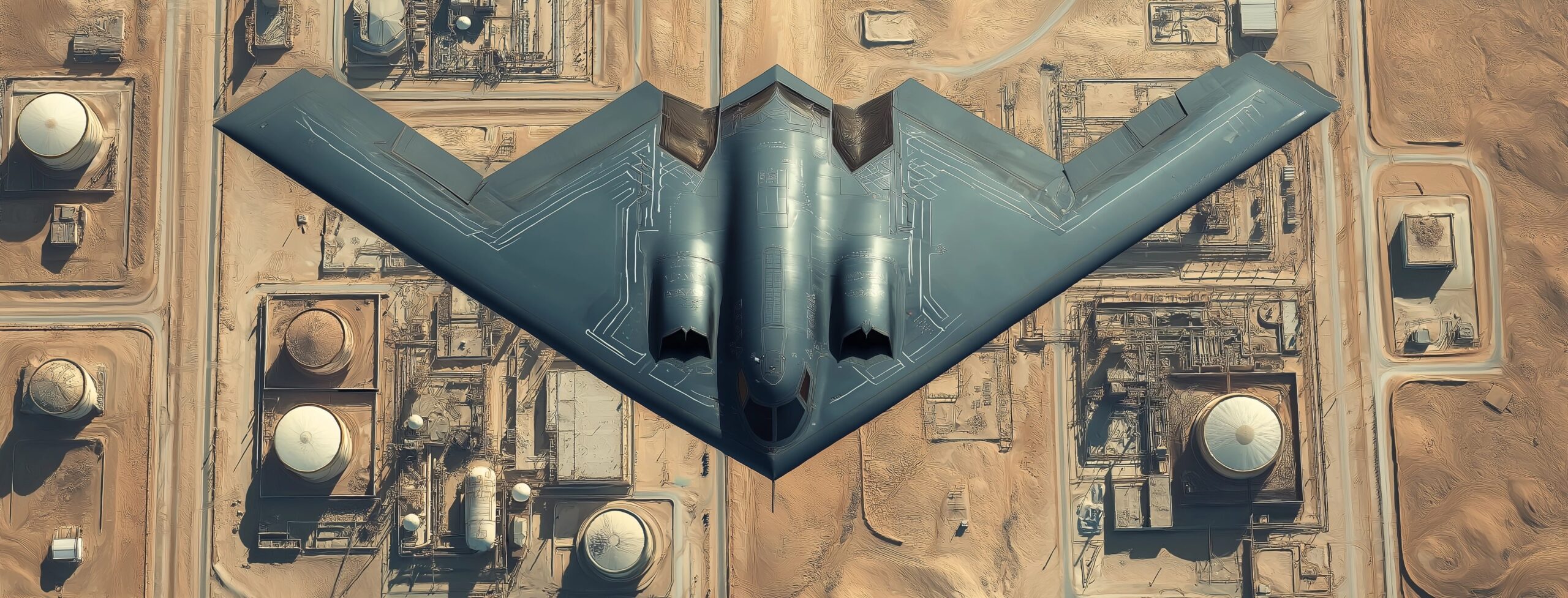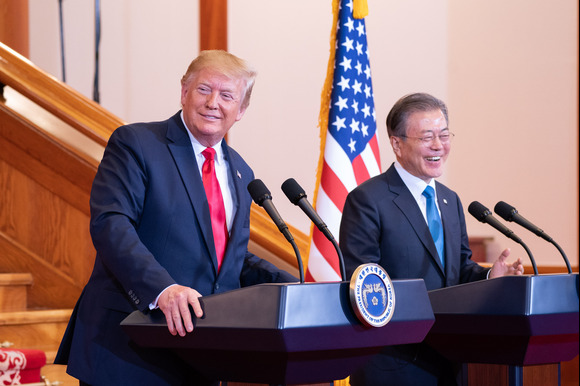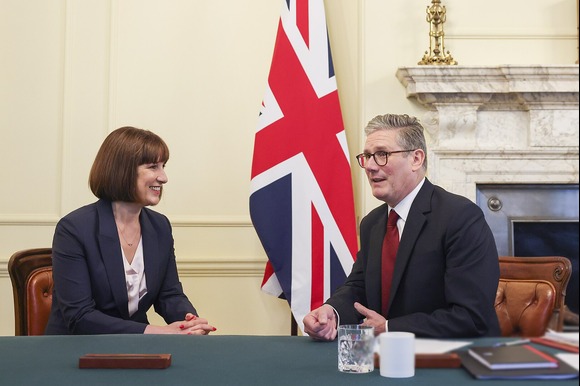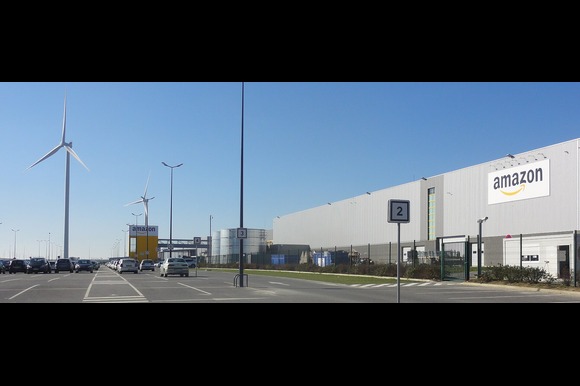
In a dramatic escalation of the ongoing Middle East conflict, US President Donald Trump has confirmed that American forces have conducted air strikes on three major Iranian nuclear facilities. The strikes, which were announced on Trump’s Truth Social account and elaborated upon during a televised address early Sunday, mark the most significant U.S. military intervention in the region since the 2003 Iraq War.
“We have completed our very successful attack on the three nuclear sites in Iran, including Fordow, Natanz, and Esfahan. All planes are now outside of Iran air space,” Trump declared, using an alternative spelling for Isfahan. In his address, he emphasized the operation’s effectiveness, describing the strikes as a “spectacular military success.”
The United States’ direct entry into the conflict in support of Israel’s offensive against Iran has intensified concerns of a wider regional war. The move has also reignited comparisons with past U.S. interventions in the Middle East, notably the Iraq invasion.
Israel had launched its campaign against Iran on June 13, targeting nuclear facilities and senior Iranian military personnel. Over 400 people have reportedly been killed in Israeli strikes inside Iran, while Iranian retaliatory attacks have resulted in at least 24 deaths in Israel.
Targets of the US Strikes
According to U.S. media reports, the American military deployed bunker-busting bombs to strike three high-value nuclear targets: Fordow, Natanz, and Isfahan. The weapons were delivered by B-2 stealth bombers, which are specifically designed for such deep-penetration missions.
In his Sunday address, Trump reiterated that Iran’s nuclear enrichment capacity had been “completely and totally obliterated,” adding that the strikes were intended to dismantle Iran’s nuclear infrastructure.
Each of the targeted sites plays a vital role in Iran’s nuclear program:
- Fordow: A fortified underground uranium enrichment facility located near Qom in northwestern Iran. Built into a mountain, Fordow is capable of housing nearly 3,000 centrifuges and is considered one of Iran’s most secure nuclear locations.
- Natanz: The country’s largest nuclear facility and a central node of its enrichment efforts, Natanz contains multiple halls of centrifuges, many of which are underground. It has been the target of multiple sabotage operations in the past, including the opening wave of Israeli strikes on June 13.
- Isfahan: A hub for nuclear research and production, this site includes uranium conversion and fuel fabrication facilities that are essential for preparing raw materials for nuclear reactors and enrichment.
For decades, the U.S. and Israel have accused Iran of attempting to build nuclear weapons—an allegation Iran denies. Tehran insists its nuclear activities are solely for civilian energy and medical use. The International Atomic Energy Agency (IAEA) has stated that, while Iran has enriched uranium up to 60 percent purity, there is no confirmed evidence of weapons development.
Iran accelerated its enrichment activities following the U.S. withdrawal from the 2015 Joint Comprehensive Plan of Action (JCPOA), a multilateral nuclear deal that had placed significant limits on Tehran’s program.
Weapons Used in the Operation
Though President Trump refrained from detailing the specific weapons used, U.S. defense sources indicated that the strikes included the deployment of GBU-57 Massive Ordnance Penetrators (MOPs), the largest bunker-buster bombs in the U.S. arsenal, weighing around 13,000kg (30,000 pounds).
Capable of penetrating up to 18 meters (59 feet) of concrete, the GBU-57 is exclusively deliverable by the B-2 Spirit bomber. Reports indicate that multiple B-2 aircraft dropped more than a dozen such bombs on the heavily fortified Fordow site. In parallel, U.S. Navy submarines launched cruise missile strikes targeting Natanz and Isfahan.
Military analysts suggest that the U.S. role was especially pivotal for neutralizing Fordow, a site Israel’s earlier strikes had failed to destroy due to its underground depth and fortification.
Aftermath and Conflicting Damage Reports
While President Trump declared the operation a total success, there remains no independent verification of the damage inflicted on the targeted facilities.
Iranian officials downplayed the impact. Mehdi Mohammadi, adviser to the Iranian Parliament Speaker, stated that Fordow had been evacuated ahead of the attack and sustained no irreversible damage.
“Iran has been expecting strikes on Fordow for several days. This nuclear facility was evacuated; no irreversible damage was sustained,” he posted on X (formerly Twitter).
Iran’s Atomic Energy Organization (AEOI) also confirmed that no radioactive contamination had occurred as a result of the attacks. “Field surveys and radiation systems data showed no contamination. There is no danger to residents around these sites. Safety is in a stable state,” the agency said.
Despite the assault, the AEOI vowed that Iran’s nuclear program would continue unabated. “With the efforts of thousands of its revolutionary scientists and experts, Iran will not allow the development of this national industry to be halted,” read an official statement.
The IAEA, which monitors Iran’s nuclear activities, said its initial surveys found no increase in radiation levels at the sites. Director General Rafael Grossi announced that the agency would convene an emergency meeting on Monday to assess the situation.
Iran’s Response and International Fallout
Iranian Foreign Minister Abbas Araghchi condemned the strikes as a gross violation of international law and the UN Charter, calling the attacks “a criminal act” and a breach of the Nuclear Non-Proliferation Treaty (NPT).
“These outrageous events will have lasting consequences. Every UN member must be alarmed by this lawless aggression,” he said. Tehran had already warned that U.S. involvement in the conflict would have “irreparable consequences.”
Iran’s Ministry of Foreign Affairs echoed these concerns, asserting that Iran reserves the right to resist “military aggression” and defend its national interests. “This dangerous war against Iran, instigated by a rogue regime, will not go unanswered,” the ministry said in a statement.
UN Secretary-General António Guterres expressed deep concern over the escalation, warning that the conflict could rapidly spiral out of control. “This is a dangerous escalation in a region already on the brink,” he said. “It poses a direct threat to international peace and security.”
In a press briefing, Iran’s foreign minister declared that the time for diplomacy had passed and reiterated Iran’s right to defend itself.
“The lawless administration in Washington is solely and fully responsible for the consequences of this aggression,” he said.
Middle East analysts have outlined a range of retaliatory options available to Iran, including direct attacks on U.S. forces and installations in the region. Stephen Zunes, director of Middle Eastern studies at the University of San Francisco, warned that as many as 40,000 U.S. personnel in the region could be within range of Iranian drones and missiles.
He also highlighted the vulnerability of the U.S. naval fleet in the Persian Gulf and suggested that Iranian proxy groups in Iraq could target American bases.
Meanwhile, Iran has showcased the Kheibar Shekan missile—one of its most advanced systems—during its latest military operations against Israel.
Iranian lawmakers have called for withdrawal from the NPT. Abbas Golroo, head of parliament’s foreign policy committee, argued that Article 10 of the treaty provides for withdrawal in the face of extraordinary threats to national interests.
Adam Weinstein, deputy director at the Quincy Institute for Responsible Statecraft, warned that the U.S. now risks becoming entangled in a long-term conflict.
“I think the U.S. is at risk of being pulled into a war of choice with Iran that, unfortunately, it started,” he said. “This could spark a cycle of escalation that spirals beyond control.”
Despite Trump’s insistence that the strikes were a one-time operation, he issued a stark warning against retaliation. “Any retaliation by Iran will be met with force far greater than what was witnessed tonight,” he stated.




